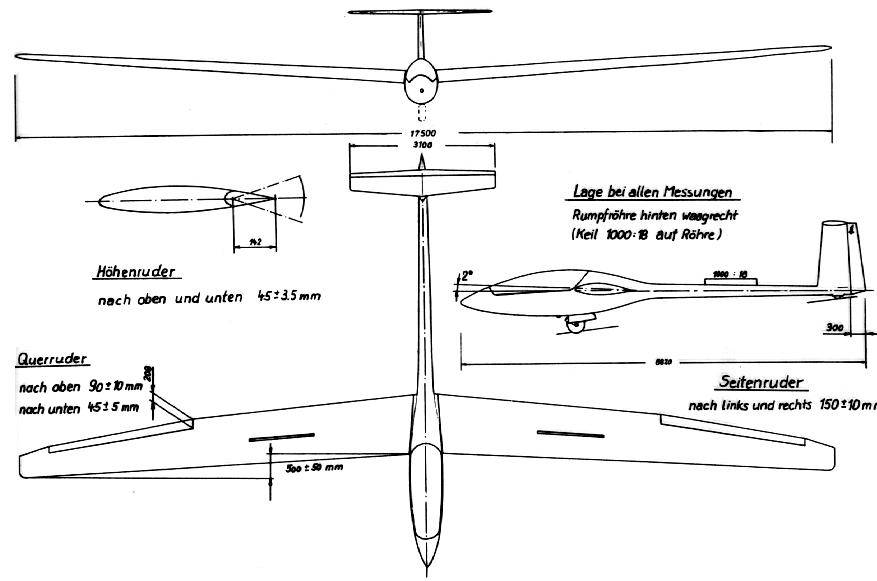Teaching us to fly
The fs31 is a two-seater with 17m wingspan. It was built when the Akaflieg training aircraft had to be replaced. The company Grob sold the prototype wings of the Twin-Astir to the Akaflieg. The fuselage of the fs31 was designed to meet the following criteria:
- Good flight performance due to an aerodynamic, sharply constricted fuselage
- Use of the new hybrid Carbon-Kevlar fiber, for its low weight and high absorption in the event of a crash
- Pilot comfort through interior optimization
- Increased safety due to the full shell cockpit. The separation plane between the fuselage shells is horizontal; in the cockpit area there is no seam that could burst open under the pilot
- Light weight
The characteristics of the new hybrid Carbon-Kevlar material had to be first investigated in numerous tests which serve today as the basis for approval at the German Federal Aviation Authority (Luftfahrtbundesamt).
The fs31 displayed harmless flight characteristics during its first flight and for its class considerable performance, which could be increased during the idaflieg summer meeting by improving the fuselage-wing transition. Still undergoing tests, the Klippeneck competition was won in July 1982. Due to its favorable stall behavior – if it is not energetically forced to tip over, it flies stationary in deep stall – it is ideally suited for beginners’ training. The robust and tall landing gear has endured many a forgotten landing flare.
The fs31 has since risen to the skies more than 23,000 times and thus proves the impressive design and construction of the Akaflieg group at that time.
Specifications
| Construction | 1977 – 1981 |
| Maiden Flight | December 30, 1981 |
| Construction method | Fuselage: Carbon-Aramid-Foam Sandwich |
| Wingspan | 17,5 m |
| Wing Area | 17,76 m² |
| Aspect Ratio | 17,2 |
| Wing Profile | E 603 |
| Dihedral Angle | 4° |
| Length | 8,82 m |
| Empty Weight | 350 kg |
| max. Weight | 560 kg |


